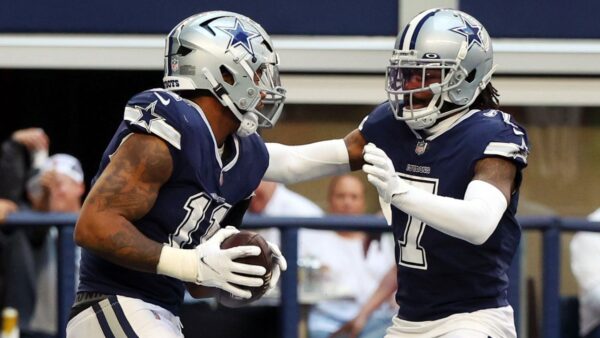Black and White Flag F1: What is its significance in Formula One racing?
There are several flags waved during a Grand Prix, it is compulsory for the drivers to acknowledge them.

The black and white diagonal flag serves as a warning to the drivers
🔍 Explore this post with:
Flags are used in Formula One as a means of communication with the drivers. The Marshalls often wave various colored flags during a Grand Prix. While everyone is familiar with the chequered flag, let us look at the significance behind the other flags, especially the black and white flag. The black and white diagonal flag serves as a warning to the drivers. In footballing terms, it is the Yellow card of Formula 1. It is used when the drivers exceed track limits and exhibit unsportsmanlike conduct.
This could lead to drivers facing penalties. It is not to be confused with the black flag, which means the driver is disqualified from the race. He must return to the pits immediately. The FIA regulations around it are as follows:
This flag should be shown once only and is a warning to the driver concerned that he has been reported for unsportsmanlike behavior.
FIA’s regulation around black and white flag
The Ferrari driver, Charles Leclerc was shown the black and white flag in the 2019 Italian Grand Prix at Monza. This was after Leclerc pushed Lewis Hamilton to the edge of the track while fighting for the lead. The FIA gave Leclerc a warning using the black and white flag, so he does not repeat it. He would have served a penalty if he did not abide by the rule.
Another example of a black and white flag was seen in the 2024 Brazilian Grand Prix where Nico Hulkenberg was shown the flag for an infringement. Hulkenberg had beached his Haas car on a certain lap but was helped by a track employee by pushing the car out of the gravel, as a consequence of this, he was given the black and white flag and was ultimately disqualified.
What flags are used in Formula 1, and what does it mean?

In 2019, Race Director Michael Masi mentioned that the FIA would use the black and white flag more often. This was after Pierre Gasly’s incident at Spa. The French driver moved under braking with Kevin Magnussen on the race track. The FIA was concerned over this situation and vowed to use the flag more often. The black and white checkered flag is waved at the end of the race.
The other flags also have a significant purpose and are deployed under the guidance of the race director. Yellow flags indicate that overtaking is prohibited due to off-track reasons. Double yellow flags waved by the race officials indicate that overtaking is prohibited due to the danger on the track. The red flag means the session is stopped, and the racers must return to the pit lane. The lap times of drivers are canceled once the flag is shown during the qualifying session.
A refresher on flags and what they mean.#F1#F12023#BahrainGP pic.twitter.com/TO5ikGWEbr
— ?Peter Kroth ?? ? (@TheKrothRoads) March 1, 2023
The SC board means that the safety car is out on track because of an incident or a lot of debris. The drivers should stay behind the safety car until the Marshalls give a sign that all hazards are cleared. Virtual Safety Car ( VSC) is deployed when there are minor incidents. The yellow and red striped flag indicates the track is slippery due to oil leakage, water, or other loose debris.
The green flag is shown after the yellow flag to inform the drivers that all is well and they can get back to racing. An important thing to note is that it is always shown after the yellow flag to notify the drivers the threat has passed. The blue flag indicates that the driver in front must allow the cars behind him on an un-lapping run with speed to pass because he is a lap or more behind. A white flag indicates that there are slow cars ahead. It is also waved in case of a medical car on the track. All the flags serve their purpose in motorsports and are used in practice and Qualifying sessions as well.
In case you missed it:
F1 Bahrain GP: ” Still have some work to do,” Max Verstappen skeptical about RB19 performance.







